Weddings began returning in 2021, picking up steam as the year wore on. But now they’re really making a comeback, foretelling a wedding season that could extricate the tent and event rental industry more fully from the doldrums of the past two years.
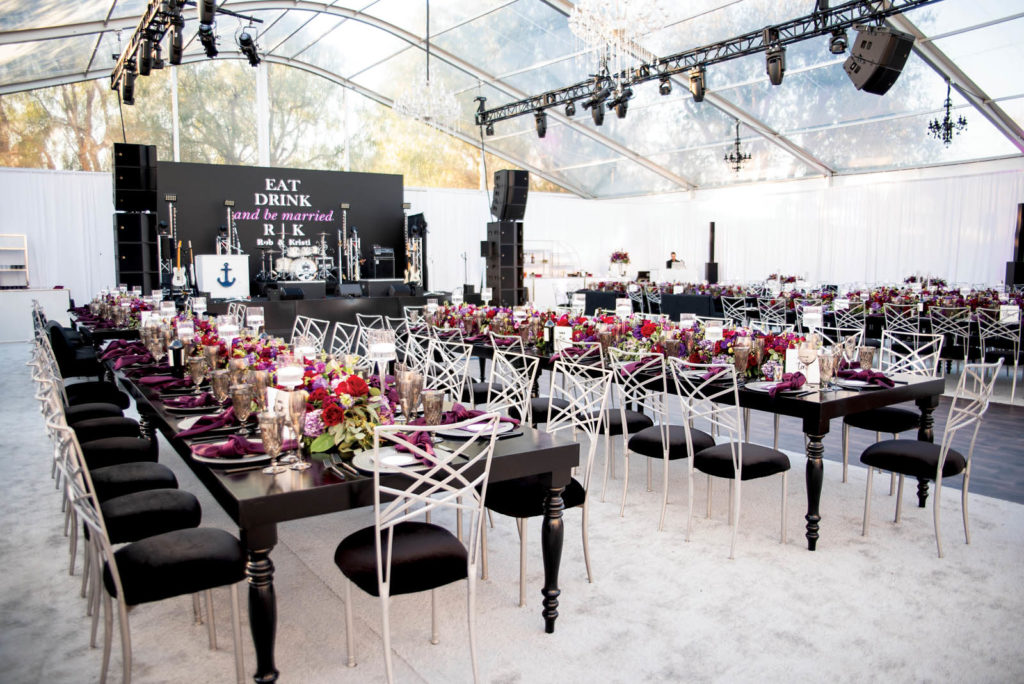
“The tent companies are telling me they’re booked solid for the summer,” says Mark Cerasi, owner and president of Dura-Trac™ Flooring Ltd. “The weddings are going crazy. Companies are getting all the new weddings and all the delayed COVID-weddings.”
Located in Kearneysville, W.Va., Dura-Trac provides HDPE modular plastic subflooring to the tent and event, disaster relief, military and stadium markets, although tent/event comprises about 80 percent of the business. During COVID, Cerasi says the majority of his product was directed to the military or for COVID-related uses, but he’s once again seeing big demand coming from tent rental companies for weddings.
And more of them are happening outdoors, says Krystle Agler, marketing manager for Bil-Jax® Inc., an Archbold, Ohio, manufacturer of event staging, tent flooring, scaffolding and construction site accessories that primarily serves the rental industry, including the event and party division.
Tented outdoor weddings allow people to exercise control over all the details, creating an event more closely matching their vision, she says. Additionally, the COVID restrictions on indoor gatherings still in place in many areas make inside events less appealing. These factors have merged to escalate not only the demand for tents, but with it the need for flooring.

Also pushing weddings outdoors is that the more traditional indoor spaces are booked solid, thanks to the COVID-related pent-up rush, says Kevin Lococo, rental market sales director for Palmer Snyder Furniture Co. Headquartered in Mequon, Wis., the company manufactures and distributes dance floors, tables, chairs and other items for tent and event rental companies.
“Weddings drive the demand [for flooring] always. Right now customers are looking for new and different locations due to restrictions, so demand is higher than ever. Brides want beauty and elegance—often wood/barn-style colors with a warm feel,” says Lococo, adding that the company’s barnboard-style patterns are its most popular flooring products.
But flooring and staging are also becoming must-haves for indoor events. Ken Puff, president of Party Line Rentals, a party rental store in Elmsford, N.Y. (“We’re one-stop for most customers”), says nearly every social event includes a dance floor, with some also incorporating staging.
“Bandstands or stages are a staple when there’s a band, although some DJs are now requesting a stage,” Puff says. “Most people just want a dance floor and can be steered into what you have available, while others have a theme or plan in mind, such as an all-white or a black-and-white checkered floor.
“Our Groove® flooring is getting quite popular, not only as a dance floor but as a tent floor,” he continues, mentioning he added the dark barnwood color in 2021. “What’s nice about this type of flooring is that not only can you make it a dance area, but the whole tent can become a dance floor.”
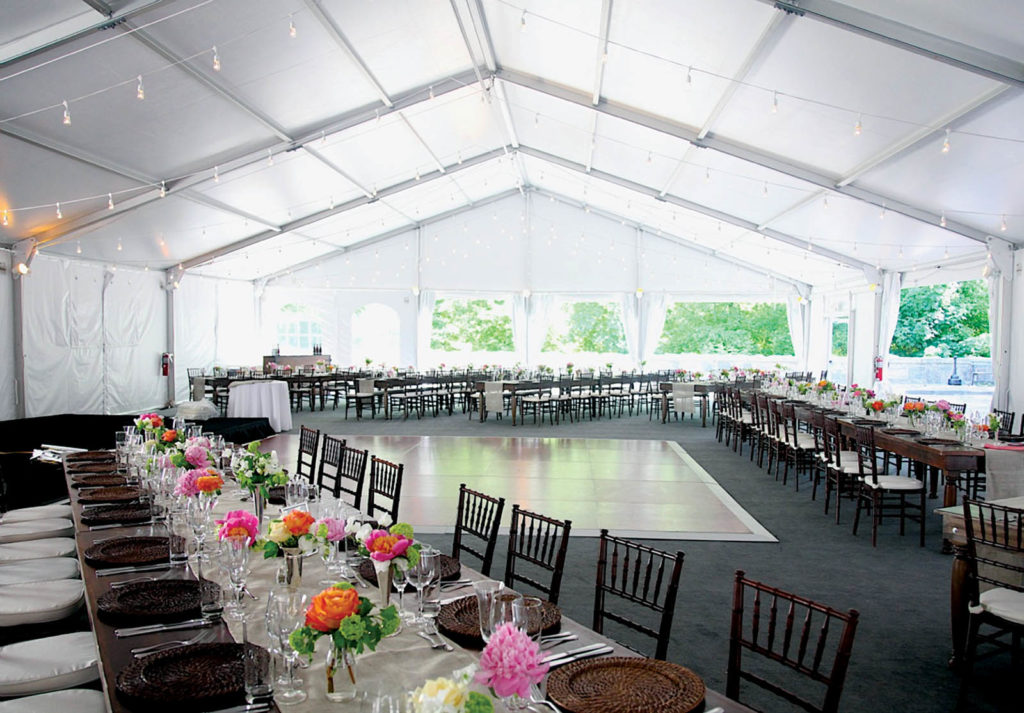
Step on this
Puff also carries the SICO® Starlight II outdoor dance floor in various colors including cherry rose (its “workhorse” dance floor), white and black. For staging he primarily uses the Bil-Jax Multi-Stage, describing the potential configurations as “endless.”
Bil-Jax offers three flooring and staging options for the tent and event industry: the ST8100, a steel staging system (the aforementioned Multi-Stage) with 4-by-4-foot gray-painted plywood decks; the AS2100, an aluminum staging system with 4-by-4-foot or 4-by-8-foot HDPE decks, snap-in legs and guardrails; and the TF2100, an engineered tent flooring system. Designed to integrate with clearspans, it is able to accommodate challenging terrains at any elevation.
Flooring products from Palmer Snyder include the EventXpress™ Seamless Portable Dance Floor and the Groove Semi-Permanent Outdoor Flooring. The EventXpress Seamless comes in 3-by-3-foot, 3-by-4-foot or 4-by-4-foot sections, in 11 different colors, with camlock connections and can be installed outdoors (there is also the EventXpress Acrylic Portable Dance Floor for inside use only). The Groove is available in 4-by-8-foot and 4-by-4-foot sheets. It can cover an entire tent floor and remain in place for extended time periods.
Something many smaller rental shops aren’t aware of is the need for subflooring, says Cerasi, and Puff carries plastic and plywood subflooring. Although unnecessary when the floor is laid down on concrete or asphalt, if the tent flooring is elevated, or if the facility has a solid floor, it can be a good idea if the floor is going down on top of grass or gravel (especially under a dance floor to keep it stable) and to help prevent water intrusion onto the floor from rain. Any type of subflooring can be installed under any kind of finished floor.
Although plywood has a long history in the industry, plastic subflooring offers several advantages over wood, says Cerasi. Because it’s lighter, it’s less costly to transport (his product is 2¾ inches thick, 4 by 4 feet and weighs about 50 pounds). It also doesn’t require inside storage as does wood. Depending on how the subflooring connects, it’s faster and easier to install than wood and lasts substantially longer, he says, although it’s a comparatively more costly initial investment.
“Plastic subflooring will run from $6 to $12 per square foot; it varies by the manufacturer,” Cerasi says. “But on average, ROI can be achieved in about 10 months, depending on the part of the country.”
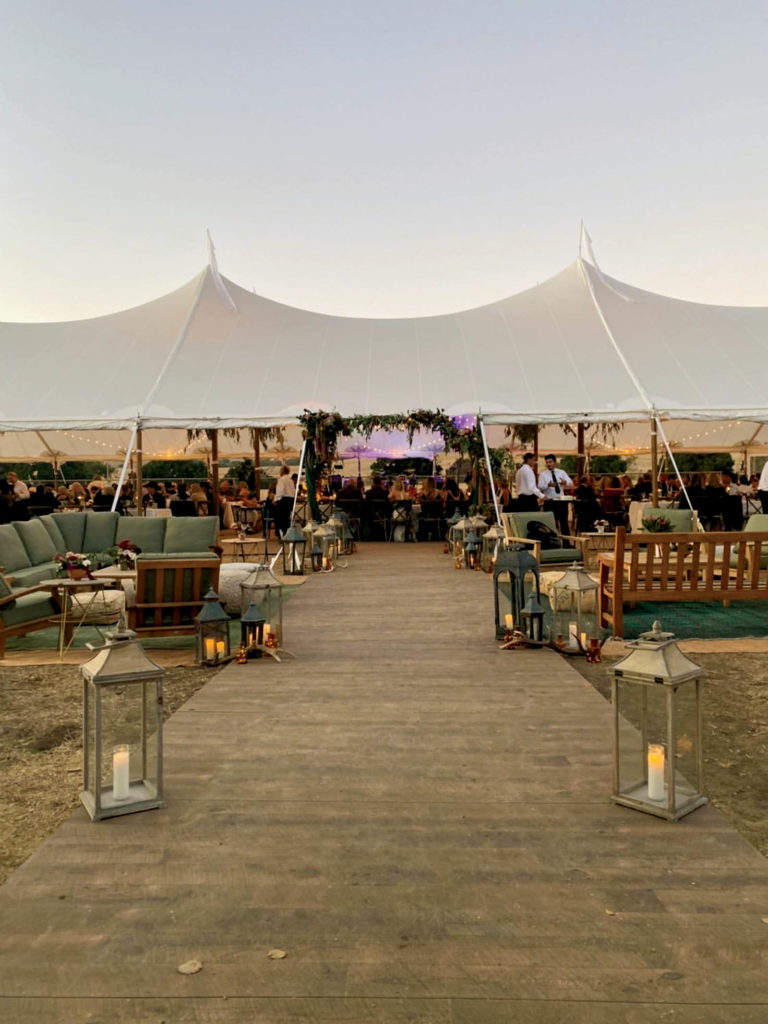
Finessing the fit
Flooring and/or staging have some attractive advantages, such as enabling tent and event companies to become a one-stop shop. These products can also bring in new customers and larger events, says Lococo. And they can offer an additional revenue stream, says Cerasi.
“In some cases, you’ll make more off the flooring and subflooring than you would on the tents themselves,” he says. “But you’ll need a knowledgeable sales staff to effectively sell these.”
There are other factors to weigh before determining whether these products will fit your business model. Some considerations include how labor might be impacted, installer training, if there’s sufficient storage/warehouse space, additional equipment requirements and local and state regulations.
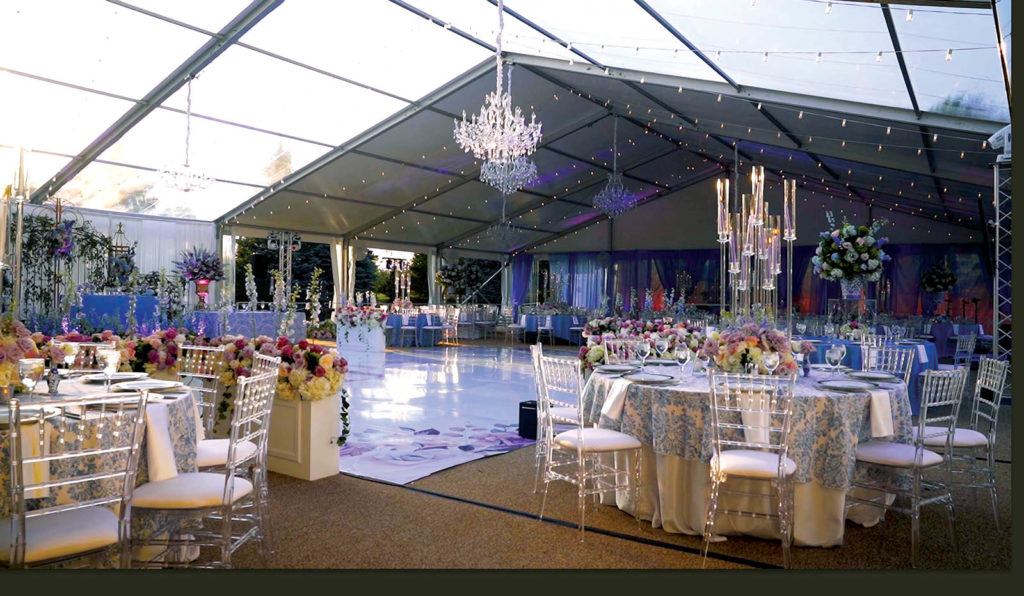
“Most floors are heavy, so make sure you have the right dollies or hand truck,” says Puff. “With staging, there are certain building codes that must be adhered to, such as guardrails, steps and so on. Dance floors should always have trim to protect against tripping hazards.”
Staging in particular requires careful questioning of the potential customer, such as how many people will be on it and what they’ll be doing, says Agler, explaining that extra bracing or legs may be required depending on the weight load and activity. Height is another concern since guardrails or steps might prove necessary. Still, she adds, the opportunities that come with staging are worth exploring, since “every event will have a focal table or band that will need to be above the crowd to be seen.” For example, Bil-Jax stages, adjustable to any height, can serve as risers for a head table or band, a tiered choir riser, a speaker platform or even a wide buffet table.
Site visits are often necessary, something Lococo advises for large jobs in particular.
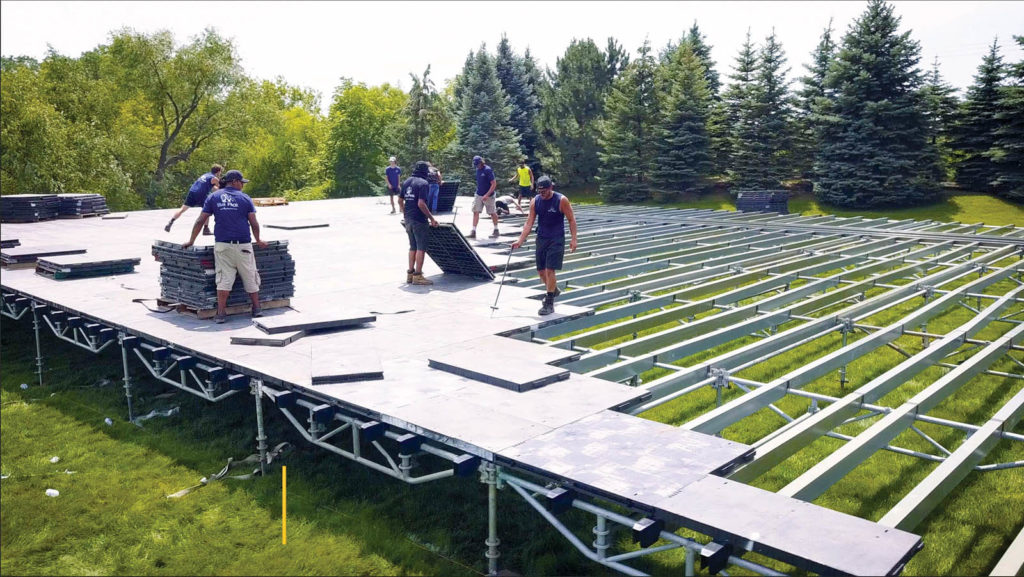
“The space where your customer wants the flooring set up may require extra steps,” he explains. “Rental companies should be sure to understand how to set it up best and what costs may need to be rolled down to the customer. This will allow a safe setup while ensuring the company charges the appropriate rates.”
There are product options aplenty, which can prove confusing when it comes to determining what to purchase. A good way to start is by asking other rental companies what they’re using and what they do and don’t like about it, says Cerasi.
As for calculating how much to acquire, Cerasi advises looking at the number and type of installs customers are requesting, tent sizes rented, and how many are typically installed at a given point in time. This is especially relevant to decisions around subflooring. If most installs are indoors, there may be little need for subflooring. Conversely, more outdoor events could increase the need, although not every flooring product requires a subfloor, even when installed outdoors.
Lococo says the average-sized dance floor runs around 20 by 20 feet, ample enough to accommodate around 75 to 85 dancers at once, making this suitable for a wedding of 150 to 250 people.
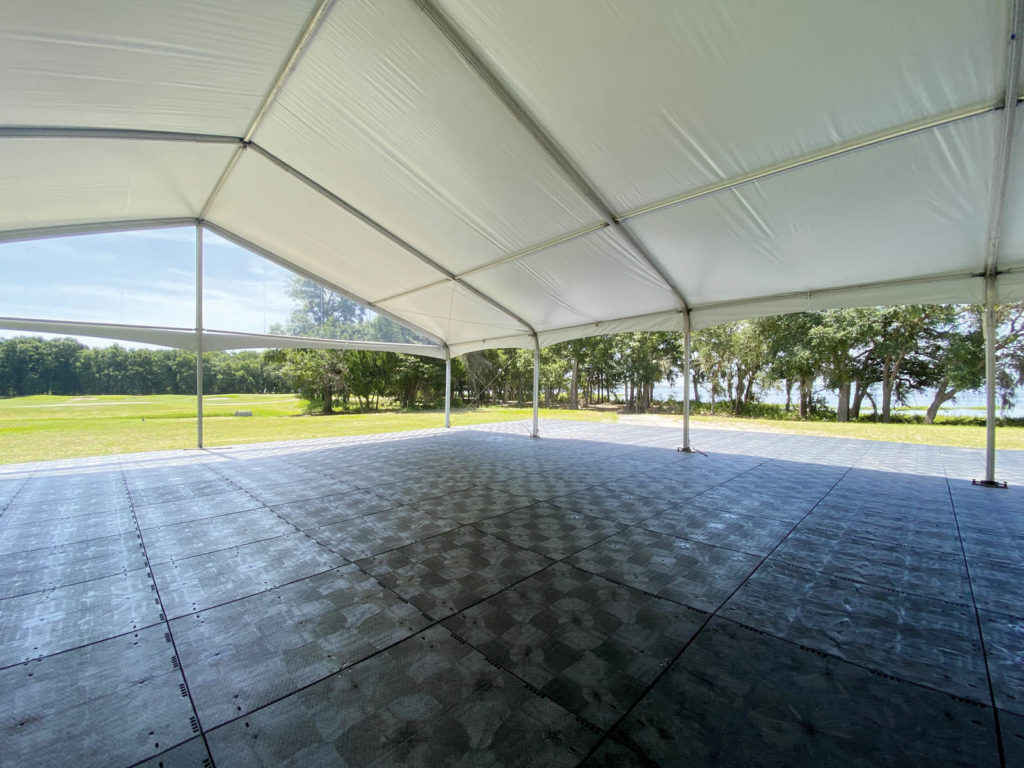
Puff’s flooring/staging inventory breaks down thusly: 960 square feet of white dance floor, 992 square feet of black, and 4,192 square feet of cherry rose dance floor; 12,800 square feet of Bil-Jax staging; more than 10,000 square feet of plywood subflooring and just under 60,000 square feet of plastic subflooring.
“We’ve done dance floors as large as 50 by 80 feet but more popular sizes are 20 by 20 feet, 20 by 24 feet and 20 by 28 feet,” he says. “I would start with no less than 50 4-by-4-foot sections, two corner kits and 12 pieces of male and female trim. You can always buy more and/or subrent.”
Finally, consider your market space, says Lococo.
“Know that while the profits on these types of products are often large, it does require a higher initial cash investment from your company,” he says. “[But] if you offer tenting or do weddings of any kind, then offering dance floor and tent flooring is a must. Brides will always want to have a celebration area to dance.”
Pamela Mills-Senn is a freelance writer based in Seal Beach, Calif.
SIDEBAR: MUST-ASK QUESTIONS
Posing the right questions to flooring/staging manufacturers can help ensure a better outcome for rental companies. For dance flooring, Kevin Lococo, rental market sales director for Palmer Snyder Furniture Co. (Mequon, Wis.) suggests asking about:
- Where the product is made. U.S.-made products are less prone to supply chain disruptions and the transportation costs can be lower.
- If it can be used outside or only indoors.
- How the panels hold together. “Camlocks are a must,” he says. “We recommend smooth locks as opposed to crank locks. They’ll secure more tightly and reliably than others.”
- Assembly time, critical in the face of labor shortages. “Ask them how long it takes with two experienced employees,” he advises.
- If the order can be added to later on. This is important since some companies may need to start with a smaller initial purchase but will want to add more in the future.
- Cleaning requirements.
- Durability and longevity.
- ROI. “What should the rate be? While this varies by region, this can help establish where you should be in your market,” Lococo explains.
- For staging, in addition to the standard questions about quality, pricing, durability, ROI, etc., Krystle Agler, marketing manager for Bil-Jax® Inc. (Archbold, Ohio), suggests inquiring about:
- The types of activities the staging will accommodate.
- The weight it can hold and how high it can go.
- The amount of bracing needed and when guardrails must be added.
- If it can be assembled outside.
- How the different tiers are connected.
- Accessories available, such as adjustable legs, stairs, guardrails or ramps.








Leave A Comment